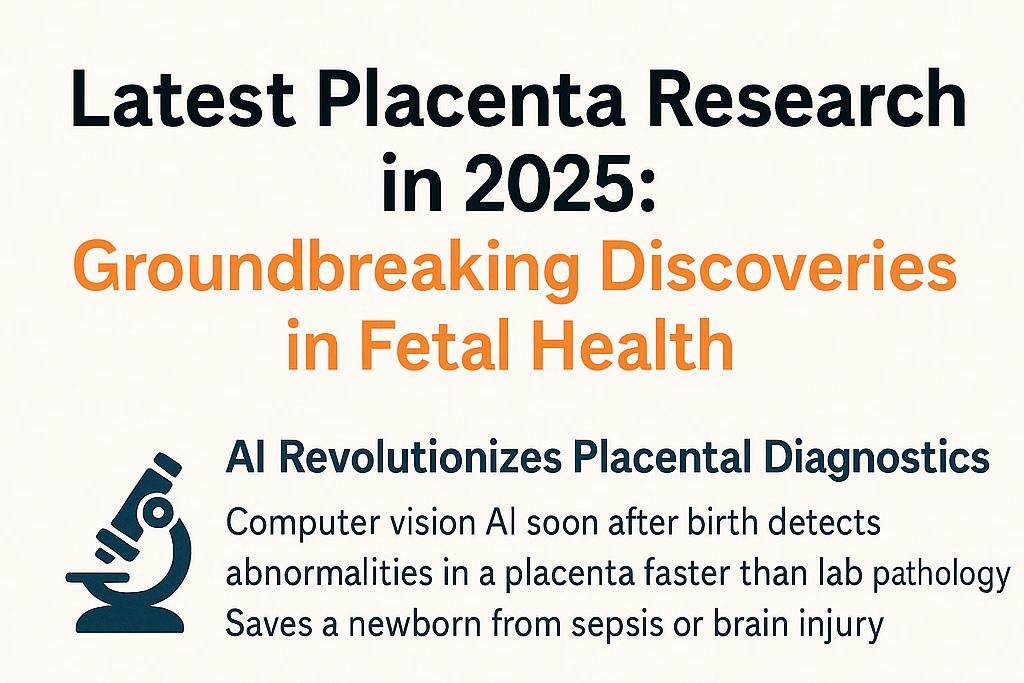Latest Placenta Research in 2025: Groundbreaking Discoveries in Fetal Health
🔬 AI Revolutionizes Placental Diagnostics
A team from Northwestern University has developed a tool called PlacentaVision. This AI system analyzes smartphone images of the placenta right after birth, detecting abnormalities such as infections, infarcts, or poor perfusion faster than traditional pathology labs.
This helps clinicians intervene early, potentially saving newborns from complications like sepsis or brain injury. It’s especially valuable in low-resource settings.
🔗 Source: Northwestern Medicine
Similarly, a model called VLCD (Vision-Language Contrastive Distillation) enhances AI-based placental pathology, even with limited data, making it accessible in developing regions.
🧬 Epigenetics: Sex Differences Begin in the Placenta
NIH scientists discovered over 2,500 methylation differences between male and female placentas. These differences may help explain why male fetuses are more vulnerable to conditions like preeclampsia and stillbirth.
The research also found evidence of fetal T-cell development within the placenta. This supports the idea that the fetus contributes actively to shaping its immune environment.
🔗 PubMed Study on Placental Immune Memory
🌍 Microplastics Found in Every Placenta Sample
A 2025 study confirmed the presence of microplastics in 100% of examined placentas. Levels were higher in preterm births, suggesting a link between environmental toxins and adverse pregnancy outcomes.
This could have long-term effects on fetal development, including endocrine disruption and neurodevelopmental risks.
🔗 The Australian: Microplastic Findings
🧪 Evolutionary and Genomic Insights
Researchers analyzed placenta cells from six different mammals to map evolutionary changes over 100 million years. The results show conserved and species-specific gene expression patterns, especially around immune tolerance and maternal-fetal signaling.
In parallel, a systematic review from early 2025 emphasized the need for data standardization and reproducibility in placenta transcriptomic studies. Sampling techniques, fetal sex, and gestational age must be considered to avoid bias.
🔗 PubMed: Placental Genomics Review
📋 Summary Table
| Topic | 2025 Discovery |
|---|---|
| AI Diagnostics | PlacentaVision & VLCD enable real-time, post-delivery analysis |
| Epigenetics | 2,500+ DNA methylation differences by fetal sex |
| Microplastics | Detected in all placentas; associated with preterm birth |
| Immune Education | Fetal memory T-cells found developing in placenta |
| Evolution & Genomics | Cross-species analysis reveals deep placental functions |
✅ Final Thoughts
The latest placenta research in 2025 reveals the organ’s remarkable complexity. From cutting-edge AI diagnostics to epigenetic and environmental factors, we are entering a new era of understanding fetal health and pregnancy management.
Keeping up with these discoveries could help improve outcomes for both mothers and babies worldwide.
🔁 Internal link suggestion: AI in Obstetrics | Environmental Health & Placenta

